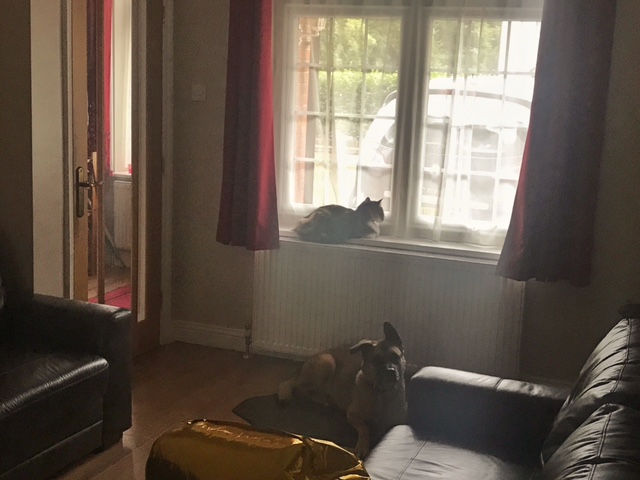Paws, claws and one very cautious dog
I recently had to take my seven year old cat, Mojo, on a short 10 minute car journey. From previous experiences driving to the vets, I was already aware that she wasn’t too keen on her cat carrier – this probably had something to do with the size of her!
However, this time she wasn’t taking her annual vet trip. This time she was getting introduced to my family dog, Keira.
My partner and I have been playing with the idea of moving in with my parents so we can start saving for a house, as renting a property in Hertfordshire snatches any chance of saving money from you. Moving in with my parents also means moving in with my dog, who I adore, but this was all dependant on whether my cat and dog can get along!
We decided it was probably best not to feed Mojo before we left in case there were any accidents in the car (and in the house) but we’d taken treats to keep her happy. The journey to my parents was fine. I always try and make sure I take my cat in the car when my partner’s available so Mojo has someone to comfort her. Because she was being introduced to a dog, we bought a harness and a lead for ease.
The meeting went well … to start with. Keira was warming up to Mojo, and she in turn, was snuggling her head into my very happy dog who is about 10 times bigger than her.
However, an overly excited dog can lead to a very fed-up cat. And that’s when her claws came out! After their little scrap, both animals were fine and a very cautious Keira, wagging her tail in excitement, played at the idea of approaching the cat once again but didn’t dare after seeing how feisty she can be.

As you can tell from the photo above, they're able to tolerate each other but still won't look at one another. So we decided this was enough for one day and we got ready to head back home. You’re probably thinking: “What on earth has this got to do with road safety?”
Well, transporting your pet from one place to another can be tricky business – as I experienced. Firstly, getting your cat into their cat carrier is a two-person job. One of you needs to lower the cat in whilst the other tries to peel their back legs from the outer box as they cling on for dear life. But before this, make sure you’ve placed their favourite blanket at the bottom to help them feel comfortable.
Secondly, if they have a toy they’re fond of, give it to them so they have something to cuddle with on their journey. For Mojo, her favourite “toy” is food or nothing. After placing a seatbelt around the cat carrier to make sure it’s safe and secure, we like to wrap the top of the carrier in another one of Mojo’s blankets. From driving with my cat, I’ve realised she feels a little more relaxed when she can’t see movement through the windows.
And thirdly, I find that closing the windows, turning the radio off and just talking to her helps. Don’t get me wrong, she still meows for help, but she seems a lot less stressed if she can hear a recognisable voice.
However, I realised I missed a trick. After pulling into my drive, a rather ripe odour filled the vehicle and I was made aware that our cat had gone for a wee in her cat carrier, which then went through her blanket and spilled over and onto the seat of my car. It looks like my next trip will entail me looking like a weirdo as I stand outside on the grass with my cat on a lead and waiting for her to go to the toilet before putting her back in the car. But for now, I’ll be cleaning and Febreeze-ing my car until I overcome the paranoid of having a smelly car.
Do you travel with your pet? Read our tips by Richard Gladman, IAM RoadSmart’s head of driving and riding advice, on driving with pets.
By Junique Aujla, IAM RoadSmart’s digital marketing executive

